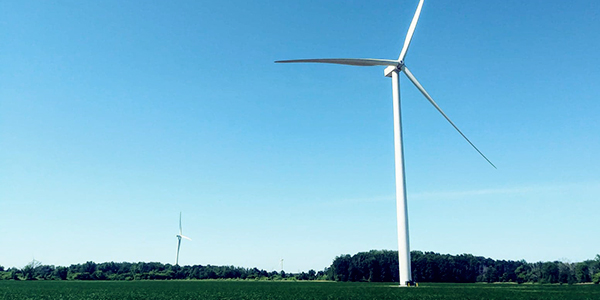MISO says it will conduct a more thorough study of transmission capacity needs in the Upper Midwest after being approached by the utilities behind the independent CapX2050 planning study.
The move means the RTO will expand and protract an existing transmission study it’s carrying out under the 2020 MISO Transmission Plan (MTEP20). MISO Executive Director of System Planning and Competitive Transmission Aubrey Johnson announced the study expansion at a virtual June 26 planning meeting of the Minnesota Public Utilities Commission, where CapX2050 and Clean Grid Alliance representatives urged commissioners to make new transmission a priority.
Johnson said the RTO made the call to expand the profile of its current North Region Economic Transfer informational study in response to a May letter from — and discussions with — the 10 Minnesota utilities that produced CapX2050.
MISO’s study focuses on the increasing non-thermal limitations of the Minnesota-Wisconsin export interface, which is experiencing bottlenecks as renewable-rich northwestern portions of the RTO’s footprint seek to transport power to load centers in the Upper Midwest. (See MWEX Study Could Elicit New Tx Planning for MISO.)
Johnson said work on an expanded study will begin later this year. Unlike the original informational study that served to explore non-thermal constraint modeling and is unlikely to result in a project, the expanded phase of the study could result in a project recommendation in the fall of 2021. MISO has never before included non-thermal constraints in its planning modeling.
The CapX2050 group has requested for a few months that MISO explore more long-range transmission planning. (See CapX2050 Calls for More Tx, Dispatchability in Midwest.)
“We’re already seeing resource choice limits … from a lack of transmission capacity,” Clean Grid Alliance Executive Director Beth Soholt told the Minnesota commission. “Whether we’re going to have that resource choice directly bears on whether we have the transmission to do that in a timely manner.”
Soholt invoked the findings in MISO’s own 2020 Interconnection Queue Outlook Report, which concluded that the RTO needs billions of dollars in new transmission to accommodate proposed generation projects in the MISO West planning region, which includes Minnesota, Iowa, parts of the Dakotas and western Wisconsin.
“Recent interconnection studies for new generation resources in MISO’s West sub-region have indicated the need for network upgrades exceeding $3 billion to accommodate the initial queue volume, and a similar trend is expected to occur in other areas with high wind and solar potential, including MISO’s Central and South sub-regions,” the RTO wrote.
Meeting New Needs
Great River Energy Chief Vice President and Transmission Officer Priti Patel said while MISO’s planning processes guarantee reliability projects are routinely built, the RTO puts little emphasis on planning for states and utilities to meet decarbonization and renewable generation targets.
“But what we asked ourselves is, ‘Are those planning processes producing efficient longer-term projects that accommodate this wholesale grid change?’” she said. “What we see is the system is changing faster than the processes can keep up.”
“We are unified on the need to act and the need to act now,” Patel said of the CapX2050 utilities.
Clean Grid Alliance’s Natalie McIntire agreed that MISO transmission planning is simply not keeping up to accommodate utilities’ decarbonization goals.
McIntire also said near-term fixes such as using dynamic line ratings and net-zero interconnections — which allow a wind generator and gas-peaking resource to split use of an interconnection site — could help free up some capacity to keep fleet transformation uninterrupted while new transmission is built.
Minnesota Commissioner Matt Schuerger, also president of the Organization of MISO States, said the RTO’s transmission line ratings are overly conservative, inconsistent and not transparently formed.
“Let’s get some consistent, transparent line ratings,” he said. “We’re not fully utilizing the transmission that ratepayers have paid for.”
In the meantime, MISO has made no indication that it’s preparing to embark on another long-term transmission package like 2011’s Multi-Value Project (MVP) portfolio.
Speaking at MISO’s virtual June Board Week, Vice President of System Planning and Chief Compliance Officer Jennifer Curran observed that there was a “fair amount of agreement” in 2011 that the MVP was necessary to facilitate state renewable portfolio standards and attract investment in wind generation. Now, however, opinions are mixed among the stakeholder community, she said.
This time around, new transmission seems to be driven by “consumer preference rather than state laws,” making beneficial long-range transmission more difficult to pin down, Curran said.





